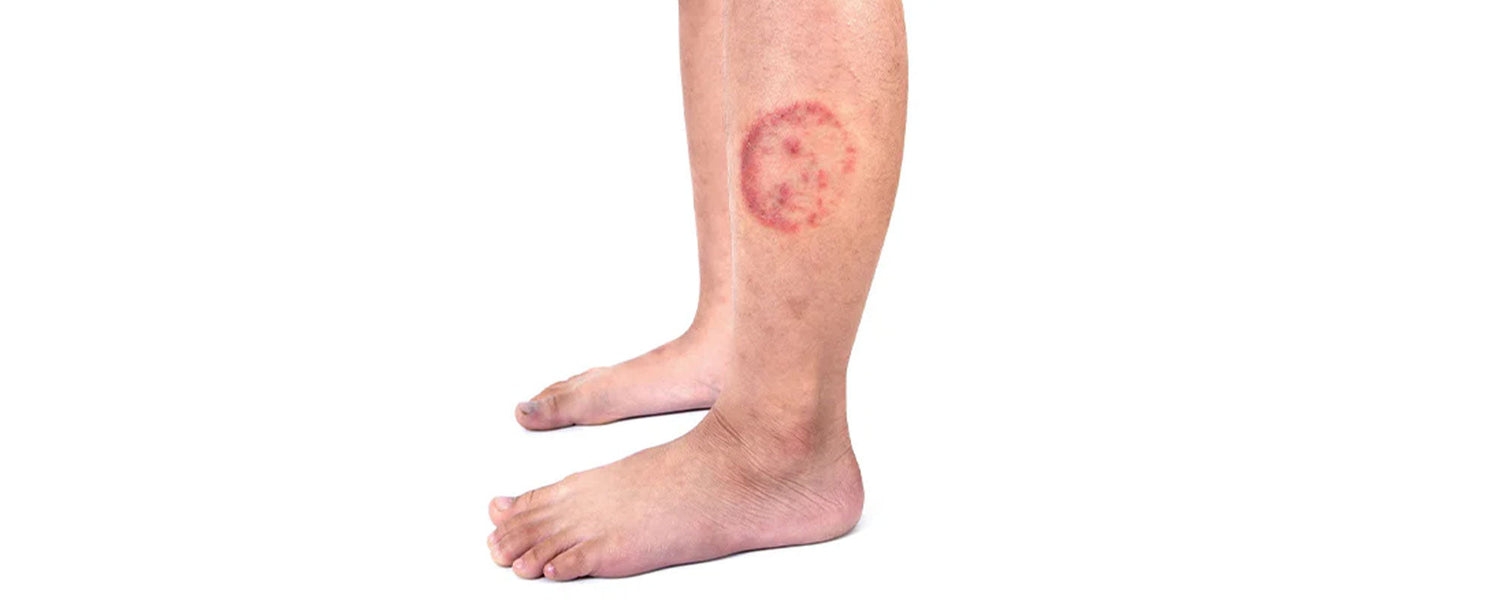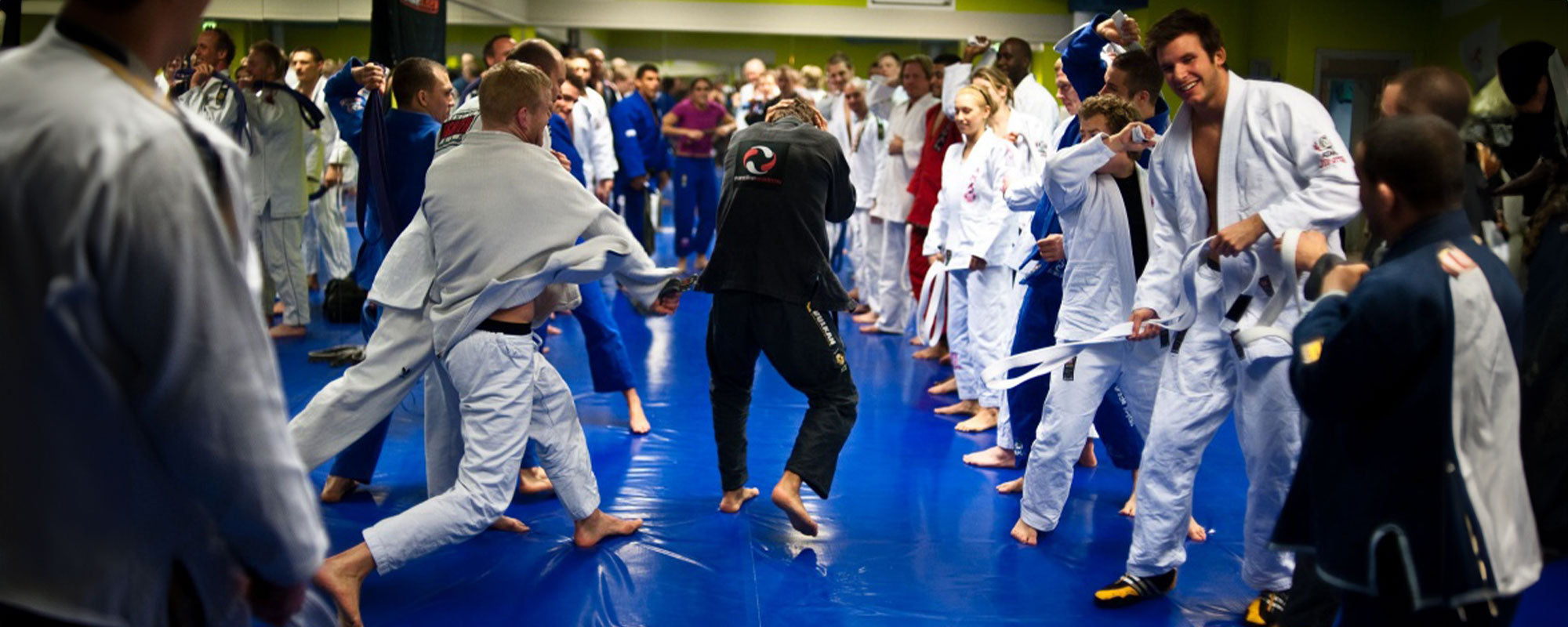Table of content
BJJ is a great martial art that can help to build strength, flexibility, and coordination. Just like any other sport, these are basic but crucial guidelines for BJJ practitioners. It is a close-range sport in which body contact is inevitable, you have to take precautionary measures in order to protect yourself from any skin-related complications. In this article, we’re going to share some tips on how to avoid skin infections in BJJ and keep your training safe and healthy.
1. Top skin diseases in BJJ and grappling
1.1. Ringworm
Ringworm can be spread via direct or indirect contacts. The most common method of transmission of ringworm is via skin-to-skin touch. Ringworm can also be transferred indirectly from contact with infected objects and surfaces, such as kimonos or belts.
MRSA or Staph High-resistant bacterial infection characterized by skin abscesses and drainage of pus or other fluids. It is common to feel warm around infected areas.
Herpes Simplex is not a sexually transmitted disease so you can relax. It's a type-1 viral infection and falls under the same category as cold sores or fever blisters. BJJ players can contract many types of herpes. Herpes gladiatorum, the most common type, is what earned it the nickname "Mat Herpes" (or "Wrestler's Herpes). A herpes rash starts with red bumps on the skin and irritation. Fluid-filled blisters are a sign of the herpes virus. These blisters will usually become yellowish-brown scabs after a few more days.
1.2. Impetigo
Impetigo is a bacterial infection that can affect almost every part of the body and is caused by either staphylococcus/strep or streptococcus.
These bacterias can affect the body via a cut, insect bite, or open sore. A skin infection does not necessarily require a cut.
Impetigo is usually characterized by small, reddish bumps that eventually break out into a yellowish-colored scab. This infection can spread from skin to skin contact or sharing training equipment. (BJJ mats, especially) that contain the bacterium.
Highly contagious impetigo can cause serious health problems if it is not treated.
1.3. Symptoms
Impetigo usually appears on the skin as small clusters of yellowish bumps. They may become larger and spread across the area. These small clusters are often not painful but can be itchy or irritating. Reddish blisters can remain on the skin after the blisters have been popped. These reddish sores will eventually turn to pus from the fluid.
Impetigo could cause flu-like symptoms, such as fever, headaches, fatigue, and swelling of the glands.
1.4. Treatment
A simple examination of the skin can help identify impetigo. Sometimes, samples of skin are required to diagnose impetigo.
Most impetigo cases can be treated using non-prescription topical antibacterial medication.
For more severe cases, doctors may prescribe both topical and oral antibiotics. The sores usually disappear within one to two days.
The effectiveness of your medication will surely increase by washing your hands with soapy water before and after the training. When to buy shoes.
You should wear shoes to the gym. You can wear sneakers if you aren't on the mats. Get a drink, take a selfie, or use the weights if you must go to the restroom. Then, wear your shoes.
Boxing shoes are fine, but you shouldn't bring them along to the mats.. You mustn't cross-contaminate the mats by bringing germs from the ground.
Imagine that I went to a public toilet barefoot. Then, I asked if anyone would let me put my foot on their necks. This would be the Ouija board I'd use to write this, as I would most likely have been killed.
You don't have to wear shoes when walking off the mats. Everybody makes mistakes. Please wipe the soles of your feet with clean clothes before getting on the mat to eliminate bacteria.
2. Steps to Prevent Infection
Your help is needed to ensure that the mat area and academy remain clean for you and for other comrades. To avoid spreading infections to your trainees, please follow these simple rules. Uncleanliness is unacceptable.
- After training/arriving home, get in the shower immediately. It would be in everyone's best interest if you refrained from petting your dog. Don't get comfortable on the sofa or in bed just yet. Take a shower, would you?
- You are required to wash your clothes after each training course. This includes your collar, rash shields, and any other similar items. Getting a second outfit is one way to accomplish this goal.
- Cleanse and cover any scrapes or cuts that may have been left.
- Put your training gear in a dry and clean bag after completing the session. It would be best if you did not keep your dirty gi in your clean gear bag.
- Use soaps made with antifungal substances like tea tree oil. Defense Soap can also be used
- Do not share towels with anyone. Quit being a cheap man. Purchase your towel.
- Wear shoes for showering if you use a community facility (such as a gym, academy, or health club).
- Ensure your academy is spotless. If you have concerns about cleanliness, don't be afraid to speak up and offer your help or suggestions.
- Get checked if there is anything strange about your body. Prevention is better than cure.
- After your infection has cured, wash all your bedding and towels thoroughly to prevent re-infection.
Cover All Wounds Training is incomplete without covering any open cuts or wounds to prevent infection. The full-length rash guard prevents skin-to-skin contact and helps to prevent skin disease.
2.1. Don't use a Gym Bag for Your Gi
Putting soiled stuff in a bag is among the biggest blunders that one may make in this situation. This mistake encourages bacteria to multiply and spread. A disposable plastic bag, or a washable mesh bag, can be attached to your gym bag.
Wash your gym clothes, equipment, and Gis as soon as possible. They shouldn't sit in the hamper and become contaminated.
Keep Lamisil at your home. If you have a rash or reddened area on your body, start to use Lamisil antifungal treatment cream. Any antifungal cream that you might have might help. Do not be embarrassed to show your trainer the problem when you arrive at the gym. Anyone practicing BJJ for a while will be able to identify most skin problems.
3. How to Treat a Cut If You Get One While Practicing BJJ
If you are cut while practicing BJJ, the most important thing for you to do is to staunch the flow as soon as you can. After washing the wound with soap and water, antibiotic treatment should be applied to the area. If the cut is intense, you may need medical attention at a medical center to get sutures.
4. Tips For Cleaning and Treating Cuts and Abrasions
BJJ athletes are expected to be very careful about cuts and abrasions. You can keep skin diseases at bay while training BJJ if you only remember to follow a few easy guidelines.
There are some factors that you need to keep in mind when it comes to cleaning and treating wounds and abrasions on your body. First and foremost, make sure that the wound is cleaned as quickly as humanly possible. You may do this by washing the wound with soap and water or by using a wound cleaner specifically designed for the purpose. Before using any bandages or ointments, be sure that the affected area has been well cleaned and dried.
If the cut or abrasion becomes infected, then you need to act fast. If the infection is mild, then you can try self-medicating with over-the-counter antibiotics or ibuprofen. If the infection is much more severe, you will have to go to the clinic for surgery.
5. Conclusion
One of the most common issues in Brazilian Jiu Jitsu is a skin infection. Here are four ways to make sure you don't get one:
- Wash your hands regularly – handwashing is one of the best ways to prevent infections, both in general and specifically when it comes to skin infections. Make sure to use soap and water for thorough washing and scrubbing if necessary.
- Avoid contact with other people – if you do happen to get an infection, make sure not to touch your eyes or mouth until you have washed them thoroughly with soap and water. If you must touch these areas, use a sanitizing agent such as alcohol or hydrogen peroxide.
- Use protective gear – when training BJJ, always wear gloves and a properly fitted suit (jacket and pants). This will protect you from cuts and scrapes that can lead to infections.
- Seek medical attention if symptoms develop – even if you think you may have only mild symptoms.













Leave a comment
This site is protected by hCaptcha and the hCaptcha Privacy Policy and Terms of Service apply.